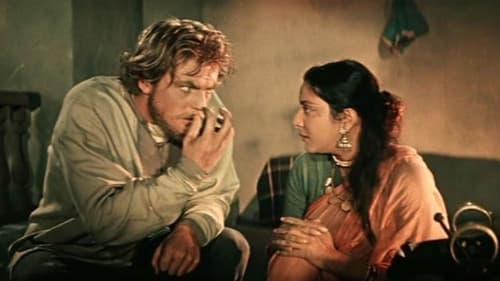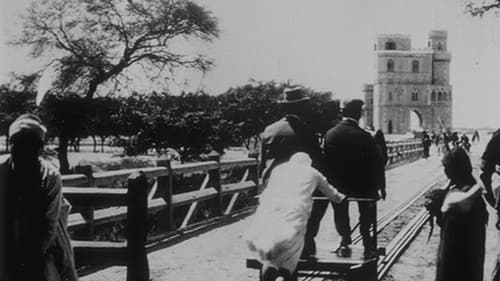Chroniques d'un village tzotzil (1992)
장르 : 다큐멘터리
상영시간 : 1시간 39분
연출 : Thierry Zéno
시놉시스
A documentary about the daily life of a native Tzotzil community in southern Mexico, shot over a period of eight years.

A group of people setting out to find a previously assumed land and upon reaching it, not knowing how to deal with the customs of the place, have to deal with all the consequences.

About the "concheros", dancers in México City that keep aztec traditions alive.

This first co-production of the Soviet and Indian cinematographers is dedicated to the Tver merchant Afanasy Nikitin who in 1466-1472 blazed the trade way from Europe to India. The film is based on Nikitin’s travel notes. Starring in the film are popular Russian actor Oleg Strizhenov and India’s 1950s movie star Nargis.

With a dual motion a cruise ship and a fishing boat pass one another on the Nile and butlers in turbans set up a wooden gangway. Thanks to a rope and pulley system cows climb skywards then disappear into the hold of the sailing vessel. On the bank, black-haired women rock back and forth, bursting out laughing and showing the first signs of going into a state of trance. Never-before filmed gestures and faces of the people of the Nile succeed one another, uprooted to an unknown, magical world. The Banks of the Nile is one of the first experiments of film in colour that uses the Kinemacolor process.

이 작품은“묘사적이지도, 설명적이지도, 흥미롭지도 않은” 방식으로 6개 서아프리카 나라 지방민들 삶 속의 리듬과 제례의식을 탐구한다. 이 작품을 통해 관객들은 작품 속 심미관과 음악들을 통해 아프리카 대륙 오지로의 시적 여행과 삶의 공간에서의 아프리카인들과의 내밀한 소통을 경험할 수 있다.

A five-year visual ethnography of traditional yet practical orchestration of Semana Santa in a small town where religious woodcarving is the livelihood. An experiential film on neocolonial Philippines’ interpretation of Saints and Gods through many forms of rituals and iconographies, exposing wood as raw material that undergoes production processes before becoming a spiritual object of devotion. - A sculpture believed to have been imported in town during Spanish colonial conquest, locally known as Mahal na Señor Sepulcro, is celebrating its 500 years. Meanwhile, composed of non-actors, Senakulo re-enacts the sufferings and death of Jesus. As the local community yearly unites to commemorate the Passion of Christ, a laborious journey unfolds following local craftsmen in transforming blocks of wood into a larger than life Jesus crucified on a 12-ft cross.

"With characteristic wit and rigor, experimental filmmaker Larry Gottheim here applies his impressionistic editing style to footage collected during his travels in the Dominican Republic. Gottheim’s formal emphasis on repetition and fissures between sound and image resonates here as a mode of sociological reflection (with the fragmentary montage mirroring elements of ritual while also destabilizing the ethnographic gaze). A largely overlooked antecedent to the contemporary blending of avant-garde and ethnographic filmmaking, MACHETTE GILLETTE… MAMA still poses a potent challenge to documentary convention." - Max Goldberg

A man demonstrates a human-powered water wheel that irrigates a rice field.

The film was made on the basis of the literary version of events in the life of the famous Russian ethnographer, anthropologist, biologist and traveler who studied the indigenous population of South-East Asia, Australia and Oceania.

John Bishop and Naomi Bishop present a portrait a peculiar life style of the Himalayan indigenous Sherpa people in their documentary , the Himalayan Herders. The 76 minutes long film is about the diverse culture and life style of herders community near Mt. Everest region of Nepal.The film was made in 1997 as a part of Case Studies in Cultural Anthropology Series.

Exploring individual responses to rapid social change, Cowboy and Maria in town follows the parallel lives of its two central characters. Cowboy and Maria have independently landed in Port Moresby, negotiating ways to survive urban life in a city ranked as one of the most dangerous in the world. Cowboy is an ex-raskol (urban bandit) and Maria an inhabitant of a squatter settlement. Unemployed and with a jail record, Cowboy has constructed an electric guitar out of scrap materials and plays on street corners. Maria lives an equally precarious existence, cultivating a seasonal garden in an urban settlement inflamed by frustration and intertribal conflicts. Far from being third world victims, they go about their daily lives with humour and imagination, rising to the challenge of enormous cultural upheaval.

Early Mondo film featuring primitive rituals, animals being butchered, unusual birth defects, and a legit trepanation scene.

A short film featuring several dancers from different countries: first an Arabian dancer, then an Algerian belly dancer, and finally Scottish highlanders in kilts performing a jig. Section one is rendered in hand-color.

African men dance, sing and play instruments.

A woman from the Ashanti tribe bathes her child in a shallow bowl.

Travellers, nomads and salesmen make their way along a dam next to the Nile.

“The picture [shows] a number of Esquimaux picking nickels from cracks in a board with their dog whips, in which sport they are very expert. In the background will be seen one of their "Topeks," a sealskin tent in which they live during their short summer.” (Edison catalog)

“One of the principal features at the Pan-American Exposition is the Alaskan or Esquimaux Village. In this most interesting exhibit, scenes are enacted just as they take place in the far away frozen North. In this subject we depict a large number of Esquimaux clothed in their native costumes and seated on their sleds, which are drawn by spans of four Esquimaux dogs. They are engaged in a race and are to be seen running over the ice and snow at a high rate of speed. There is a pond in the foreground of the picture on the shores of which the home stretch of the race takes place. The picture is perfect photographically, and the figures stand out clear and sharp, throwing a most perfect reflection on the pond.” (Edison film company catalog)

A young woman in traditional Japanese attire fixes her hair and kimono while her servants assist her.







